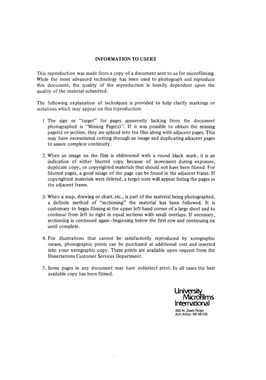| dc.contributor.author | Pohlenz, Michael, | en_US |
| dc.date.accessioned | 2013-08-16T12:28:55Z | |
| dc.date.available | 2013-08-16T12:28:55Z | |
| dc.date.issued | 1983 | en_US |
| dc.identifier.uri | https://hdl.handle.net/11244/5137 | |
| dc.description.abstract | While extensive research has been published on the general subjects of Purcell and his odes, the specific area of performance analysis has received only modest attention. The efforts made by historians to explain and preserve the music of Purcell should ultimately be utilized in the performance of his music. To that end, the purpose of the study was to prepare a performance analysis of Come ye sons of art by Henry Purcell. | en_US |
| dc.description.abstract | Chapter III consisted of the performance analysis. The available performance editions were reviewed, followed by the definition of appropriate modern performance forces based on documentation of Purcell's probable resources. A compendium of performance practice procedures followed in which practical solutions to problems of interpretation, improvisation, and technique inherent in the performance of Baroque music were considered, and suggestions for their application made. | en_US |
| dc.description.abstract | The study was comprised of three chapters. Chapter I dealt with historical perspectives of the ode in English Restoration music to 1680, and Purcell's influence on the English Court ode from 1680 to 1695. Chapter II contained a structural analysis of the work, commencing with discussion of the overall organization of form, tonality, and text in Come ye sons of art. Thereafter, the structural elements of sections, phrases, and motives were identified for each movement. | en_US |
| dc.description.abstract | In examining the specifics of performance, two generalities surfaced which bear significantly on all Baroque performance practice. First, the practices of the performers were of crucial importance to Baroque composers, for many stylistic details were entrusted to them and not written out in the music. Thus, truly authentic Baroque performance cannot be defined in every detail. Second, with the rights of the performer in mind, Baroque music can be performed in a variety of ways as long as they sound consistent with the understood style of the era. Michel de Saint-Lambert defended this premise in 1707, thus: "Since Music is made only for the ear, a fault which does not offend it is not a fault." It was concluded that for the serious student of Baroque music performance, no greater assets need be cultivated than those of technique and imagination. | en_US |
| dc.format.extent | ix, 153 leaves : | en_US |
| dc.subject | Education, Music. | en_US |
| dc.title | A performance analysis of Come ye sons of art by Henry Purcell. | en_US |
| dc.type | Thesis | en_US |
| dc.thesis.degree | D.M.A. | en_US |
| dc.thesis.degreeDiscipline | School of Music | en_US |
| dc.note | Source: Dissertation Abstracts International, Volume: 44-04, Section: A, page: 1017. | en_US |
| ou.identifier | (UMI)AAI8314787 | en_US |
| ou.group | Weitzenhoffer Family College of Fine Arts::School of Music | |
